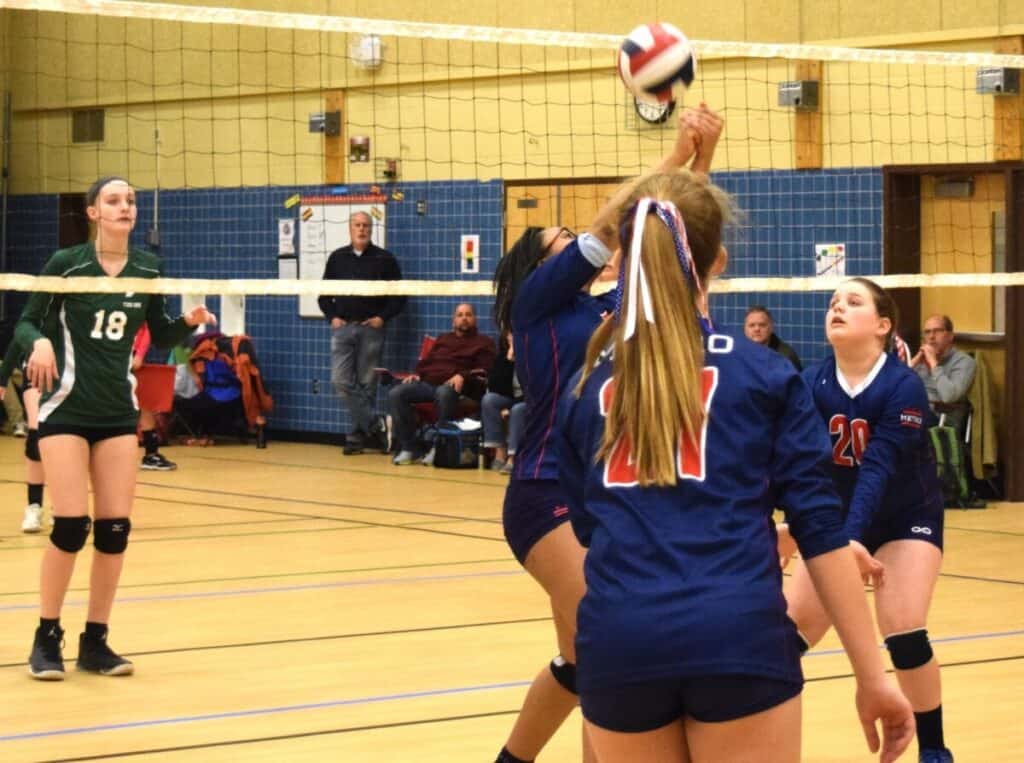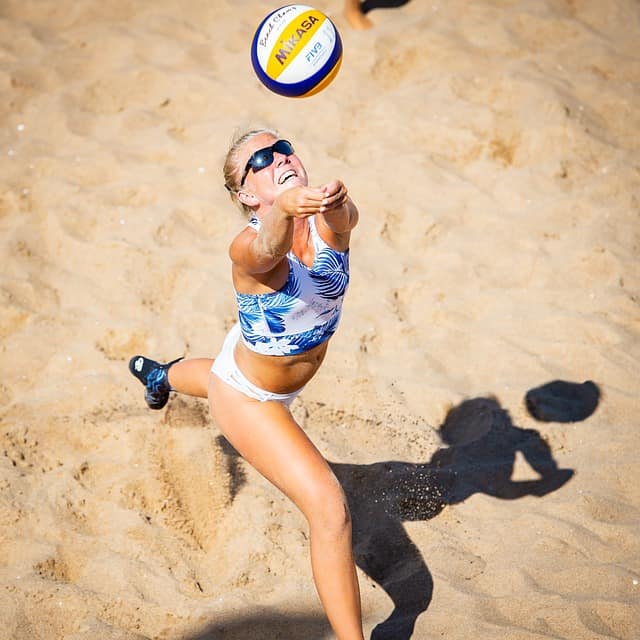Do you hear someone on the court or in the stands yelling, “FREEBALL” and wonder what that’s all about? Freeballs in volleyball happen from time to time and can really affect the scoring in the game, so it’s helpful to understand what’s going on and how to benefit from them.
Definition of a Freeball
In volleyball, a freeball is when a team plays the ball over the net in a way that is not considered an attack. In other words, the ball is passed or volleyed over the net instead of being served, hit, or tipped.
Freeballs are a mistake unless the players are very young, novice, or just playing a casual and fun game. Competitive teams never want to GIVE their opponent a freeball because the likelihood of scoring is very low, and your opponent can usually mount their best attack as a result.
When a defensive player digs a hard-driven ball, sometimes they may give a freeball directly back to the other team simply because they can’t control the power of the attack. In this case they’ve at least kept the ball from hitting the ground, but the freeball is setting their opponent up for another easy attack.
A similar situation happens when there’s a wild pass or a shank. If the ball can be recovered at all and brought back into the court, the third hit must be played over the net, and this will almost always be a freeball.

Other times, your offense may have a mistake that causes players to be out of position, or for a hitter to be in the wrong place for the set that has been sent to them. Someone will have to pass a freeball over the net just to keep the rally alive.
In each of these cases, the freeball is not a threatening play for the team receiving it. A freeball is usually considered a “gift” to the other team because it’s such a soft, non-threatening way of getting the possession of the ball back.
Importance of Freeball Control
It’s very easy for players to relax when they see a freeball coming over the net. The best strategy is to actually get excited and aggressive when a freeball is on the way. Your team has an opportunity to score, and you should want to take advantage of it!
When the ball comes at a slower pace, it’s easy for players to lose focus and make sloppy mistakes. The receiving team has an extra second or two, so the defender should have plenty of time to get in position, set their feet properly, and use good form in passing to their setter.
If the setter receives a good pass, this is a great time to run the fastest play your team has, like a “quick”, a slide, or a power tip. Your opponents are out of system and you don’t want to let them get reset if you can help it.
Drills for Freeball Practice
Coaches should focus on drills that spread the ball out to the edges and back of the court in varying heights and speeds. Some freeballs do come deceptively quickly and with a lower trajectory than expected, at times.
One of the key strategies coaches should look to emphasize in this situation is to not let the speed of the freeball dictate the speed of your play. Just because the ball was lobbed over the net all the way to the back of the court, doesn’t mean your should pass at this same speed to your setter. Strong teams will change the tempo right back with the quickest attack that they can to keep the pressure on their opponent.
Great drills for freeball play will be the ones that challenge the defender to make a solid pass and their teammates react quickly.
My Favorite Freeball Drill
My favorite freeball drill has the coach or helper toss the ball from just on the other side of the net. The receiving team only has 1 player watching for the pass. The other players are either all:
- touching the outline of the court and facing out of bounds OR
- sitting on the court with their eyes closed OR
- laying on the court, face-down
As soon as the ball leaves the coach’s hand, the passer is allowed to yell “FREEBALL” which signals to the other players that they can now move, look for the ball, and get into position.
The focus here is to take advantage of this freeball and win the point. Working through a few rotations and mixing up the starting positions can really make this drill a fun challenge and put players in positions that force them to think quickly and develop reaction speed.

Are you just trying to keep the rally alive?
If there are enough players to have an opposing lineup, then the receiving team must make an attack or their team loses a point (whether they have an error, get blocked, or they themselves play a freeball). If they make an attack, play continues until one team loses the point OR plays a freeball.
The coach or helper then alternates sending a freeball to the opposite team to start the next rally. The first team to 7 wins, or first team to -7 loses.
Giving a Freeball to the Other Team
Sometimes your attack is broken and you know you’re out of options. In that split second that you’re deciding how to handle playing the ball over the net, what should you do?
If you need to give a freeball, you want to choose one of these two options:
1. Play the ball as DEEP into your opponent’s court as you can without sending it out of bounds.
There are two reasons we want to play it deep:
First, you’re going to buy your team just a little more time. Usually when you send a freeball over it’s because your offense is out of rhythm or scrambling. By sending it deep, and especially if you play it high, you prevent a very quick attack coming back, which means you’re buying your team just a few extra seconds to reset.
Secondly, you’re at least forcing someone to make a good pass from the very back of the court to their setter. While this isn’t as challenging as digging a great hit, it can still provide opportunity for your opponents to mess up. Give them the worst passing option that you can, go deep.
2. Play the ball to the most open space on the court.
Obviously we always want to look for the open space on the court, but especially in a freeball situation, you don’t want to pass it directly to a player. There is always a space on the court that is the least well-covered and that’s what you’re looking for.
Do you have questions about other volleyball words? This next post is all about volleyball terms, accronyms, and abbreviations.
Freeballs Are Just Part of the Game of Volleyball
While you can and should train to avoid giving freeballs, and to also take advantage when you get them, there’s just no avoiding them completely. Through practice and help from your coach you can really work to improve this part of your game.
The important things are to have fun, make the best plays you can in the situations you find yourself in, and never give up!

Resources
Men’s volleyball image published by https://www.flickr.com/photos/klemencic/ and under public domain.
Sand volleyball image by Christoffer Borg Mattisson from Pixabay
Recent Posts
Athletes, listen up! Do you have a closet full of old jerseys, sweatpants, and tees that you just can't seem to part with? Well, dust them off, because you're sitting on a goldmine of fashion...
You may have heard, or you may have noticed, that there's been a change to the rule about double contact in volleyball. In 2022, an experimental rule change began to be implemented, where the double...
